How to Fix BSOD (INVALID_DATA_ACCESS_TRAP) on Windows 11?
Some Windows 11 are reportedly getting a BSOD (Blue Screen of Death) whenever they attempt to perform an update or when they perform a certain action that such as deleting, moving, or copying files from the OS drive.
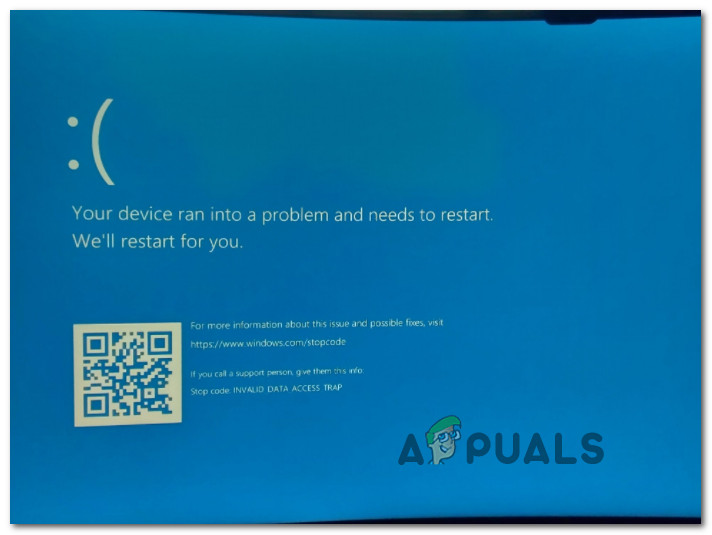
After investigating this issue, it turns out that this problem has multiple potential causes that might be responsible for this error code. Here’s a list of reasons why you might be seeing this problem occur on your Windows 11 computer:
- Corrupted USB 2 / USB 3 drivers – As it turns out, this might occur due to an issue with the USB drivers. This is mostly reported to occur when a PCI USB 2.0 or 3.0 card is in use. To fix this problem, you’ll need to manually update your fleet of USB 3 drivers.
- Bad drive error – Bad sectors on your HDD or SSD can also be the underlying cause of why you’re experiencing the BSOD when performing certain system actions. This is much more common with traditional hard drives and can typically be fixed by running a CHKDSK scan with the /f parameter.
- System file corruption – System file corruption can also ve responsible for this crash, especially if you’re dealing with this problem when attempting to update your current Windows 11 build. To fix this problem, you’ll need to run SFC and DISM scans in quick succession (with admin access) in an attempt to repair your system files. Additionally, you can go for a repair install procedure or even a clean install.
- Outdated BIOS firmware – If you’re using an older motherboard model that was released prior to the release of Windows 11, chances are you’re experiencing this crash due to an outdated BIOS firmware. In this case, you should use a flash USB disk to update your current BIOS version to the latest.
- Interfering legacy media 3rd party apps – If you’re using the legacy Media Features app or the Windows 10 version of VLC, chances are you might get this type of BSOD when your OS is forced to use some common dependencies that are currently in use by some of these apps. To fix this issue, you’ll need to uninstall the problematic apps from your system.
- Interfering media burning 3rd party apps – Certain feature updates (and cumulative updates) that are mandatory to Windows 11 might be inhibited by a capture software like Avermedia or a traditional media burning app like PowerDVD. If you have these apps installed on your system, uninstall them before checking if the issue is resolved.
Now that we went over every potential reason why you might see this BSOD crash occurring on Windows 11, let’s go over a few methods that have been confirmed by other users that have been dealing with the same kind of issue.
Uninstall Media Related apps (if applicable)
As it turns out, the fix that seems to help a lot of Windows 11 users eradicate the INVALID_DATA_ACCESS_TRAP blue screen of death is uninstalling every media app.
There are no official explanations on why this is effective, but community members are suspecting that some old dependencies that are used by legacy apps like VLC and Media Feature are somehow conflicting with the new file-sharing protocol on Windows 11.
If you’re experiencing this issue while trying to access some native components of Windows 11, follow the instructions below to uninstall legacy media player apps such as VLC, BS player, and the Media Feature Pack.
Here’s what you need to do:
- Press Windows key + R to open up a Run dialog box. Next, type ‘appwiz.cpl’ inside the text box and press Ctrl + Shift + Enter to open up the Programs and Features menu.

Open up the Programs and Features menu - At the User Account Control window, click Yes to grant admin access.
- Inside the Programs and Features menu, scroll down through the list of installed programs and locate the legacy media programs that you currently have installed.
- Right-click on the media program and click on Uninstall from the context menu that just appeared.
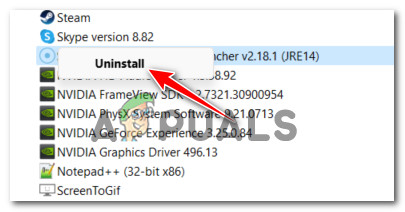
Uninstall the media program - Follow the on-screen instructions to complete the uninstallation. If you have multiple media apps available, uninstall each one individually.
- Once the legacy media apps are all uninstalled, reboot your PC and see if the issue is fixed by repeating the action that was previously triggering the BSOD crash.
If the problem is still not fixed or this method was not applicable, move down to the next potential fix below.
Reinstall every USB 2 and USB 3 drivers
As it turns out, a scenario that often causes the INVALID_DATA_ACCESS_TRAP BSOD is a scenario in which your USB 2.0 or 3.0 drivers are corrupted or partially incompatible with your current PC configuration.
In order to fix this issue, you’ll need to go into Device Manager and manually update every USB driver under Universal Serial Bus Controllers.
This method has been confirmed to be effective n situations where every attempt at updating Windows 11 resulted in the same blue screen of death (INVALID_DATA_ACCESS_TRAP).
If this scenario is applicable, follow the instructions below to reinstall every USB 2.0 and USB 3.0 drivers.
Here’s what you need to do:
- Start by pressing Windows key + R to open up a Run dialog box.
- Next, type ‘devmgmt.msc‘ and press Enter to open up a Run dialog box.
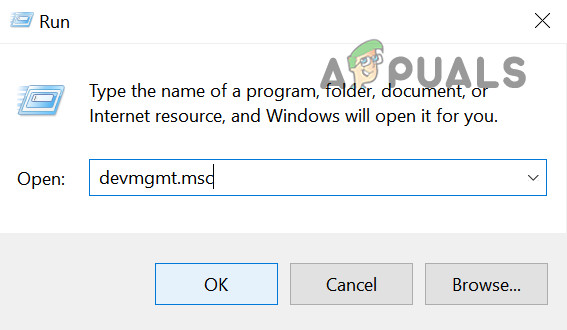
Open Device Manager Note: At the UAC (User Account Control), click Yes to grant administrative privileges.
- Once you’re inside Device Manager, expand the drop-down menu associated with Universal Serial Bus controllers.
- Next, you’ll see a list of USB controller drivers. Right-click on each one and click on Uninstall until you manage to get rid of all of them.
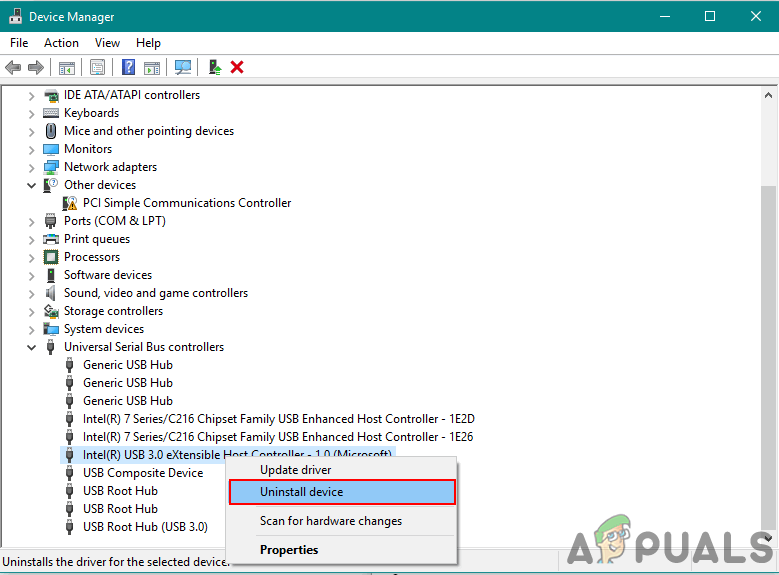
Uninstall the USB controller drivers Note: Repeat this action with every USB controller driver you have under Universal Serial Bus controllers until every device is uninstalled. DO NOT restart your PC until you get this done.
- Once every Universal Serial Bus controller is uninstalled, reboot your PC.
- At the next startup, your Windows installation will realize that the USB 2.0 and USB 3.0 drivers are missing and it will install generic driver equivalents that won’t cause this behavior again.
- Repeat the action that was previously causing the INVALID_DATA_ACCESS_TRAP BSOD and see if the problem is now fixed.
If the same kind of issue is still occurring, move down to the next potential fix below.
Uninstall Capture Software & Power DVD (if applicable)
If you get this issue while attempting to upgrade to Windows 11 or when attempting to install a pending feature upgrade and you don’t have any 3rd party media program installed, you should take a look if you have PowerDVD or a capture software like Avermedia installed on your PC.
Capture software products and CD / DVD burning suites like PowerDVD are known to interfere with certain cumulative feature updates, so it wouldn’t hurt to have them uninstalled prior to checking if the INVALID_DATA_ACCESS_TRAP is fixed.
If you’re looking for specific instructions on uninstalling capture or burning software, move down to the next method below:
- Start by pressing Windows key + R to open up a Run dialog box.
- Type ‘appwiz.cpl’ inside the text box and press Ctrl + Shift + Enter to open up the Programs and Features menu.

Open up the Programs and Features menu - If you are prompted by the UAC window, click Yes to grant admin access.
- From the Programs and Features menu, scroll down through the list of installed programs and locate the PowerDVD, Avermedia, or any other media burning or media capture 3rd party app that you have installed.
- Right-click on the program that you wish to uninstall and click on Uninstall from the context menu that just appeared.

Uninstall the media program - Inside the uninstallation screen, follow the on-screen instructions to complete the uninstallation.
- Once every app that’s potentially interfering with the Windows feature update is uninstalled, reboot your PC and see if the issue is fixed by repeating the action that was previously triggering the BSOD crash.
If the problem is still not fixed or this method was not applicable, move down to the next potential fix below.
Deploy a CHKDSK Scan
According to some affected users, the INVALID_DATA_ACCESS_TRAP blue screen of death can also appear as a result of some bad sectors on your HDD that might be crashing the OS when you’re trying to perform a certain action.
In the event that bad sector data ends up affecting a critical service and crashing your system, you’re most likely seeing the INVALID_DATA_ACCESS_TRAP due to a critical crash.
Some users that were facing this issue when attempting to move, delete or manage files on the OS drive have confirmed that running a CHKDSK scan ended up resolving the issue for them entirely.
Note: A CHKDSK (Check Disk) scan will scan your disk space for any inconsistencies and automatically attempt to repair it (if you run it with the /f parameter.
You can also follow this method if you’re experiencing the INVALID_DATA_ACCESS_TRAP crash when attempting to update your Windows build to the latest.
Here’s a quick guide on running a CHKDSK scan:
- Start by opening up a Run dialog box by pressing Windows key + R.
- Next, type ‘cmd’ inside the text box and press Ctrl + Shift + Enter to open up an elevated Command Prompt.
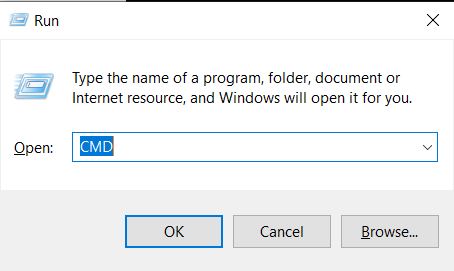
Deploying a CHKDSK scan - At the UAC (User Account Control) prompt, click Yes to grant administrative privileges.
- Once you’re inside the elevated Command Prompt, type the following command and press Enter to initiate an offline CHKDSK scan with the option to automatically repair the corrupted system files :
chkdsk /f
- Once the CHKDSK scan is complete, restart your computer and wait until the next startup is complete.
- After your PC boots back up, repeat the action that was causing the BSOD and see if you still end ups seeing the INVALID_DATA_ACCESS_TRAP error.
If the problem is still not fixed, move down to the next potential fix below.
Update your BIOS version
According to a few technical Windows users that have been experiencing this issue, the BSOD crashes with the INVALID_DATA_ACCESS_TRAP error code can originate from an outdated BIOS firmware that’s not updated to accommodate Windows 11.
This is even more likely if you’re experiencing this issue while trying to update your Windows 11 to a newer build.
In this case, you’ll have to flash your current BIOS version and update it to the latest version made available by your motherboard manufacturer.
If you’re still experiencing the INVALID_DATA_ACCESS_TRAP BSOD despite following every potential fix above, proceed by creating a bootable USB containing the BIOS update and installing it from the initial screen.
Note: Each manufacturer has its own BIOS updates according to their various models and the steps of installing it will be slightly different. There is no universal way of flashing a BIOS via USB, so the best we can do is create a few general steps that should point you in the right direction.
Important: Before starting with the steps below, take the time to look over the official documentation provided by your manufacturer on how to update your BIOS version via USB.
Here are the general instructions on how to do this:
- Start by ensuring that you have a blank USB flash drive at the ready.
- If the USB stick you are planning to use already contains data, back it up and then right-clicks on the flash drive and choose Format from the newly appeared context menu.
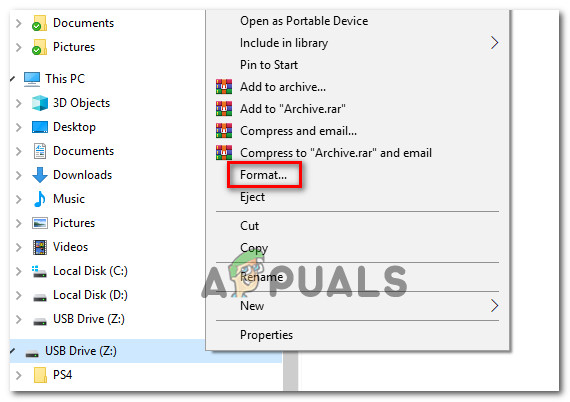
Formatting the USB drive - Once you’re inside the Format window, set the File System to FAT32 and check the box associated with Quick Format.
- Next, click Start once you are ready to format the drive.
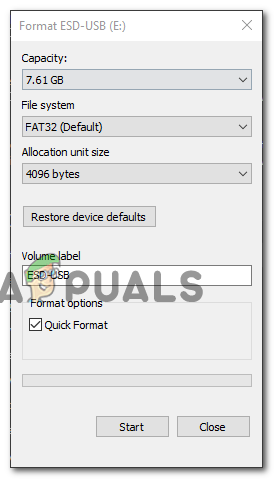
Formatting the drive - Once the formatting procedure is finished, the next step is to download the BIOS update that you want to install from the manufacturer’s website and copy it on the USB flash drive.

Downloading the latest BIOS firmware update Note: You might be required to make some specific files to the files in order to allow them to install them from a USB drive.
- After the Boot files are copied on the USB flash drive, restart your computer and press the required key (Setup key) at the next startup to enter your BIOS settings.
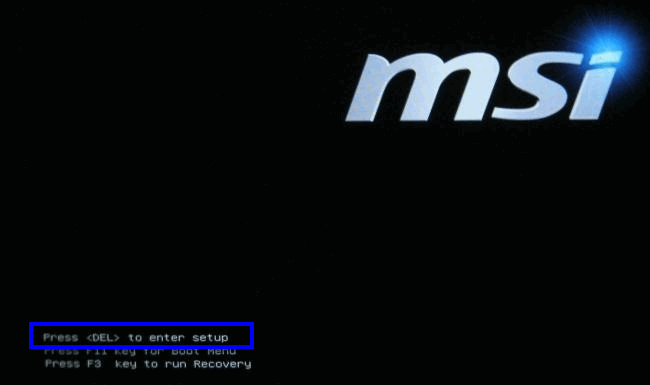
Pressing the setup key Note: In most cases, the Setup key is either Esc, Del, or one of the F keys (F2, F4, F6, F8, F12). If none of these keys work, look online for specific steps of accessing your BIOS settings according to your motherboard model.
- Once you’re inside your BIOS settings, look for an option named Update System BIOS (or similar).
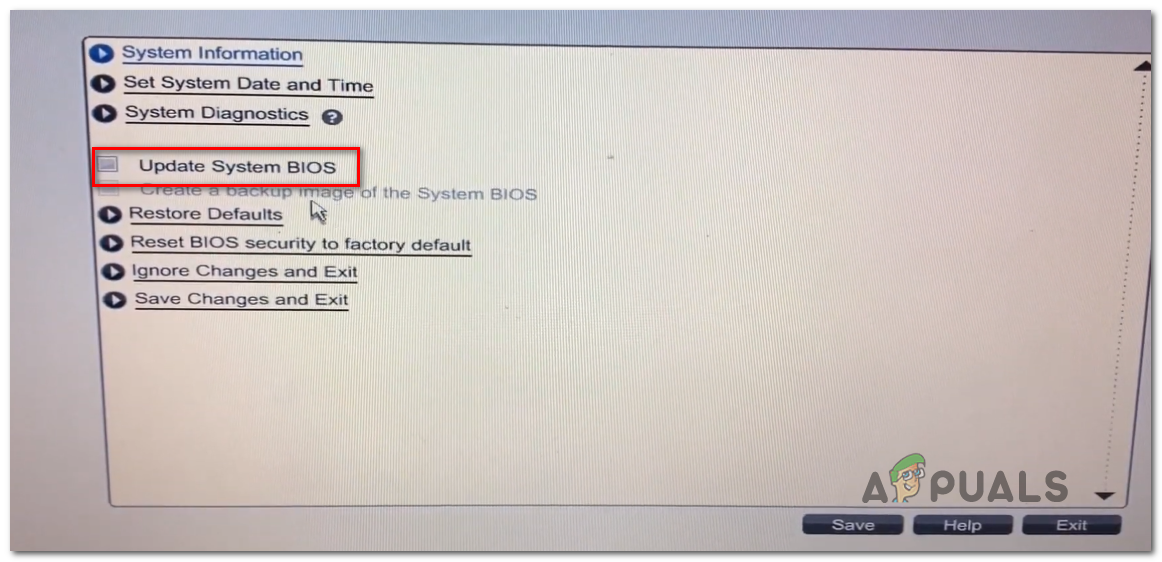
Updating the BIOS version - When you are asked to confirm the process, do so as instructed, then select the drive containing the BIOS update.
- Once you select the appropriate drive and confirm, the process of updating your BIOS will start automatically.
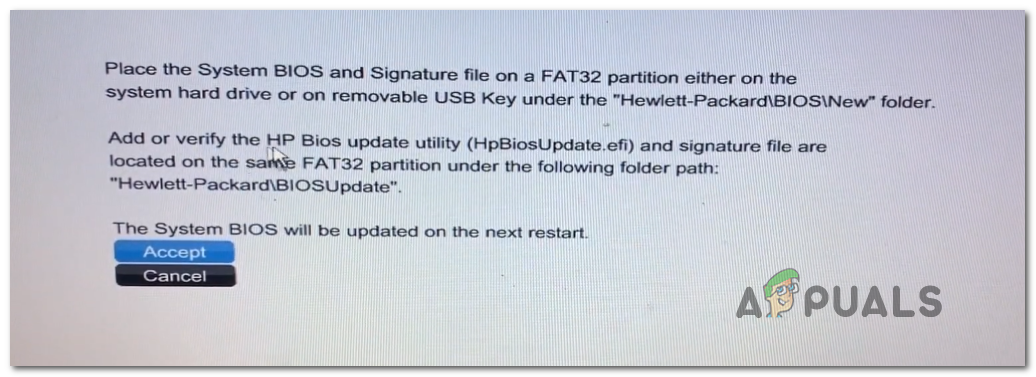
Accepting the BIOS update - After the operation is complete, restart your computer and wait for it to boot up.
- Once the next startup sequence is complete, you can safely remove the USB flash disk from your computer.
- Repeat the action that was previously triggering the INVALID_DATA_ACCESS_TRAP error and see if the problem is now fixed.
In case the problem is not fixed or you were already using the latest available BIOS firmware version, move down to the next method below.
Deploy SFC and DISM scans
Another scenario that might indirectly cause a critical crash with the INVALID_DATA_ACCESS_TRAP status code is some type of system file corruption. Most likely, a critical process used in the action that you’re taking when getting the error is unreachable due to some type of system file corruption.
If this scenario looks like it could be applicable, you should be able to resolve the most common file corruption instances by running a couple of utilities capable of fixing this behavior: SFC (System File Checker) and DISM ( Deployment Image Servicing and Management).
Both utilities are useful for situations where a system file corruption is involved. The key difference is the two have different approaches when it comes to fixing system file corruption. And this is why we recommend running them in quick succession.
SFC is much more efficient when dealing with logical errors rooted in a drive problem, while DISM is better at fixing OS components.
But keep in mind that DISM requires an Internet connection since it relies on the WU component to download healthy copies to replace corrupted files. On the other hand, SFC is entirely local and uses a locally cached copy to replace corrupted instances.
If you haven’t tried fixing your INVALID_DATA_ACCESS_TRAP error using these two utilities so far, follow the instructions below to run both in quick succession from an elevated CMD prompt:
- Start by up a Run dialog box by pressing Windows key + R.
- From the screen that just appeared, type ‘cmd’ and press Ctrl + Shift + Enter to open up a Command Prompt with admin access.
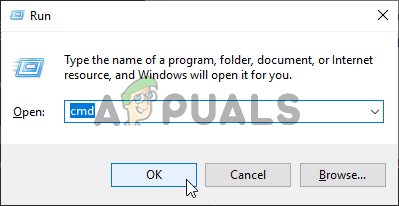
Open up a Command Prompt window - After you see the UAC (User Account Control) prompt, click yes to grant admin access.
- From the CMD window that just appeared, type the following command in order and press Enter after each one to initiate a DISM scan:
Dism.exe /online /cleanup-image /scanhealth Dism.exe /online /cleanup-image /restorehealth
Note: DISM will actively use Windows update to download healthy copies. You need to ensure that you have a stable internet connection before initiating this procedure. The first command will scan your system for inconsistencies while the second will repair them.
- As soon as the DISM scan is finished, restart your computer and wait for the next startup to complete.
- After your PC boots back up, follow step 1 again to open up another elevated CMD prompt.
- Inside the elevated CMD prompt, type the following command and press Enter to initiate an SFC scan:
sfc /scannow
Note: Once you start the SFC scan, don’t interrupt it prematurely even if it looks like it’s frozen indefinitely. If you do this, you might end up causing additional logical errors as the utility is busy mitigating current system issues.
- Finally, restart your computer once again and see if the issue is resolved at the next system startup.
If you’re still experiencing the same type of critical BSOD crash (INVALID_DATA_ACCESS_TRAP) despite the fact that you run both scans (SFC and DISM) in quick succession, move down to the final potential fix below.
Perform a repair install
In case the SFC and DISM scans above didn’t fix the issue in your case, there’s a big chance that you’re dealing with some type of system file corruption that cannot be fixed conventionally. In this case, the only viable fix is to perform a series of instructions that will reset every OS component.
If you’ve come this far with no resolutions, there are two ways you can deal with this issue:
- Perform a repair install.
- Perform a clean install.
If you don’t mind losing the data currently stored on your OS drive, a clean install is a less tedious procedure that only requires a few clicks and no installation media. However, the major disadvantage is that you will lose your personal data (apps, games, user preferences, etc.) unless you back up your data in advance.
If you don’t want to lose your personal data, you should go for a repair install. But keep in mind that this procedure is a bit more lengthy and you will need to use compatible installation media.
However, the big advantage is that you get to keep all your personal components including apps, games, user preferences, and personal media. The operation will only rest the OS components.





